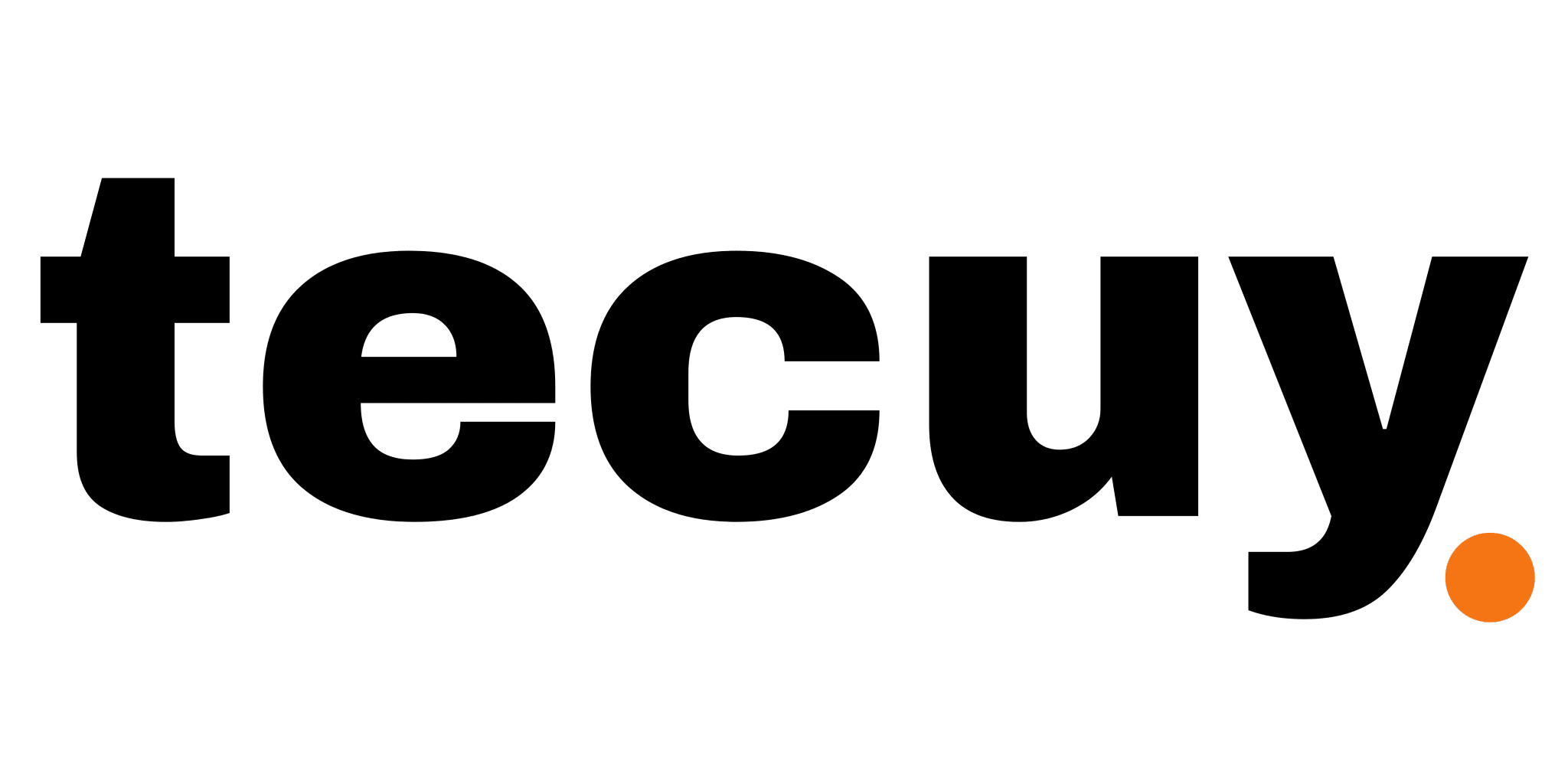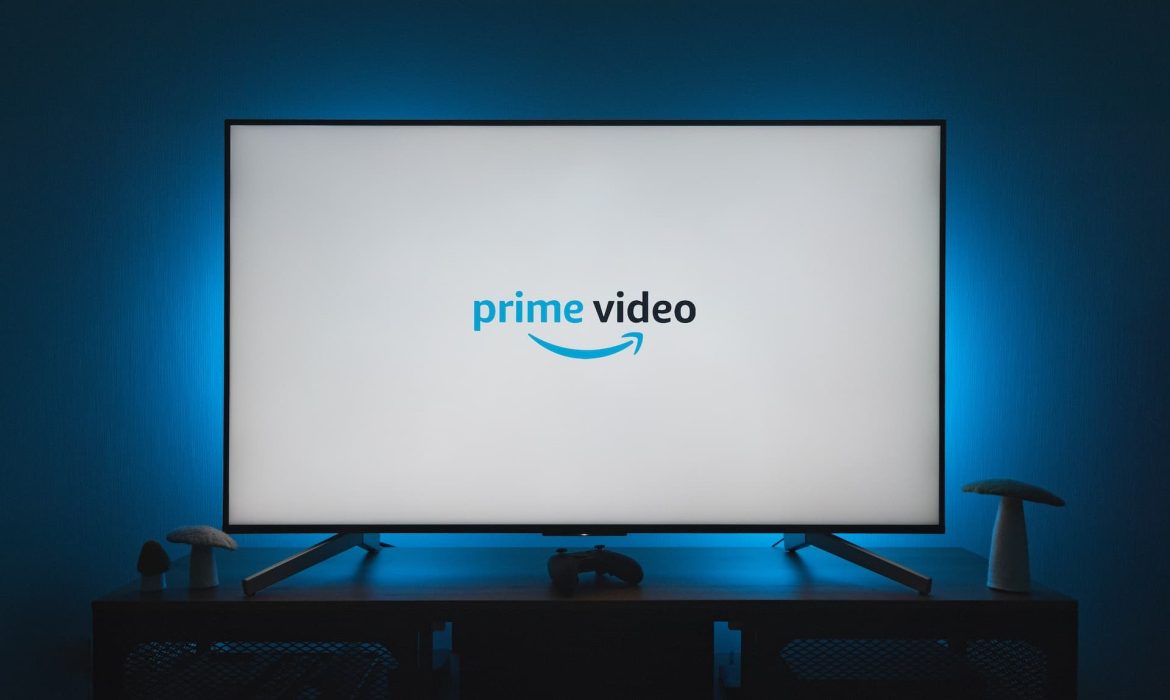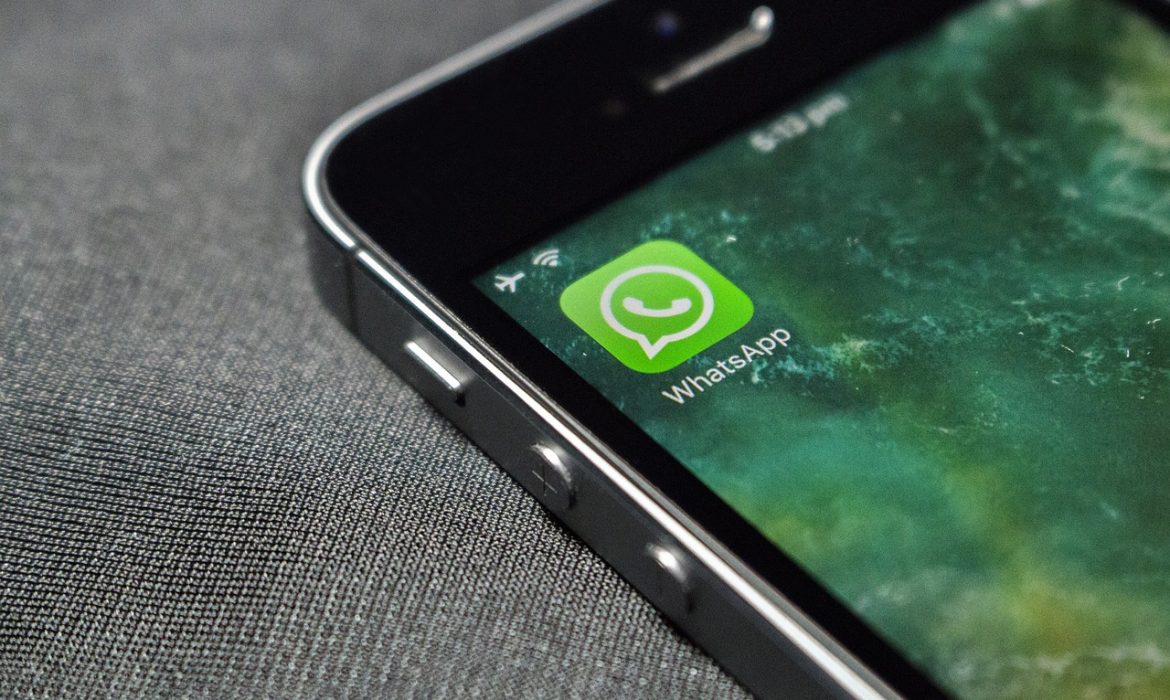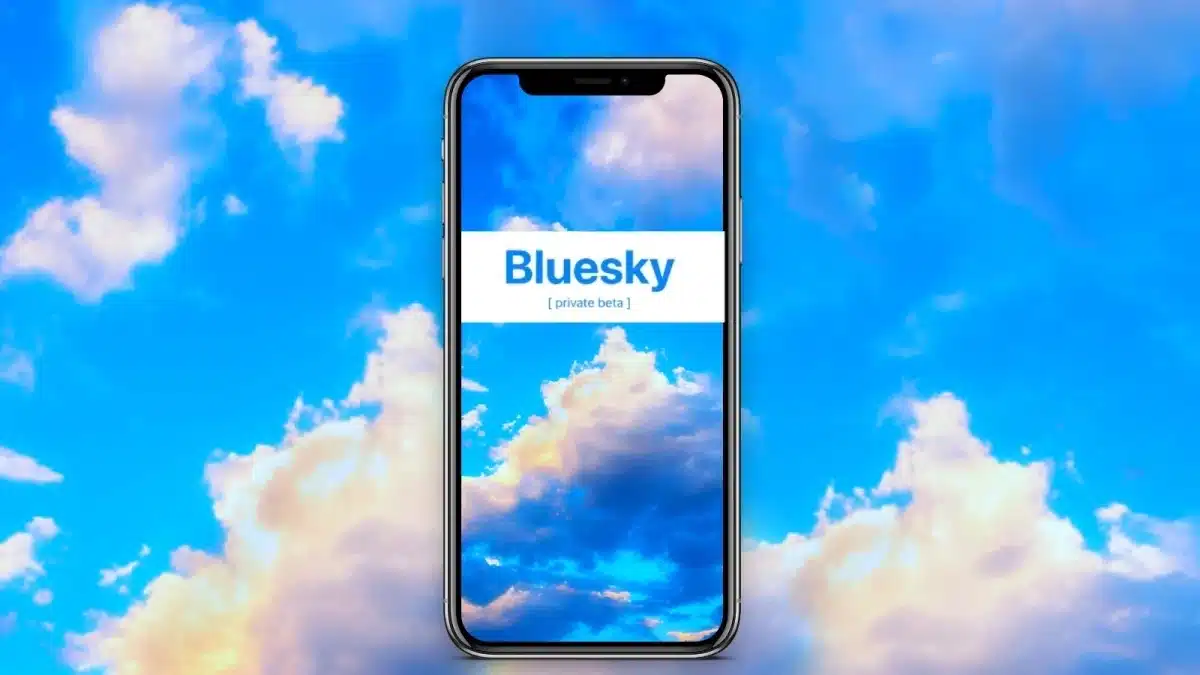How to Fix the Elden Ring Multiplayer Not Working Error
Are you also facing the Elden Ring multiplayer not working issue? Do not worry, as this is a common issue faced by the Elden Ring players.
FromSoftware and Bandai Namco, the video game companies, scheduled a maintenance break in February. They aimed to fix the Elden Ring multiplayer feature and remove the bugs causing it. However, they could not prevent this problem. There could be many reasons for this issue, but fortunately, there are a few fixes.
Use a wired connection
You cannot play the game without a stable internet connection. Restart your internet router to avoid lengthy processes. If the problem persists, switch to a wired connection to play Elden Ring in multiplayer mode.
Choose the best browser
Opera GX is a browser designed for gamers. The browser is integrated with Twitch, Discord, etc., contains gaming news and a new release calendar, and supports dark themes.
Restart the game
There might be many reasons for Elden Ring multiplayer not working. Most of the time, temporary problems occur, which leads to the error message. Restart the game in that scenario; it might work. On platforms like PlayStation, there can be problems if you often leave the game in sleep mode.
Also Read – What Is The Snapchat C14A Error? Best Ways To Fix It
Restart the device
You can play Elden Ring on your PC, PlayStation, or Xbox, but if the device is not up-to-date, has cache files, and gets heated, it will create a problem for the users. Restarting your device at fixed intervals improves its performance.
Check the server’s status.
It is common for any online game to face server issues frequently. It could be scheduled maintenance or bugs stopping you from playing Elden Ring games. The issue is often from the Elden Ring server’s side, making the game dysfunctional. Nothing can be done from the user’s side, so simply wait after checking the server status on official handles.

Use player ID on Xbox
Turning on the player ID online on the Xbox console can also fix the error. This method has proven to be efficient for many users.
Repair game files
You might face issues with the Elden Multiplayer Ring if your PC has broken game files. To repair the game files on a PC, follow these steps:
- Open the Steam library and click on the Elden Ring.
- Go to properties and then the local files tab.
- Click on verify integrity of game files.
Set a multiplayer password
Difficult passwords can also make it hard to connect to other players. Ensure that the passwords do not increase the complexity of multiplayer games and that you and other players have set the same password.
Also Read – Starlink Review: Everything You Need to Know About Elon Musk’s Brainchild
Update the game
Elden Ring multiplayers keep getting updated to avoid bugs, perform efficiently, and might cause problems if not updated on time. To update the Elden Ring game, go to Steam libraries and find the Elden Ring game. Click on game properties and turn on the “always keep updated” option to stay up-to-date.
Update GPU drivers.
Most PC gamers have a graphics card installed. If the GPU drivers are updated, it might also cause Elden Ring multiplayer not to work. Update your GPU drivers by following these steps
- Search from the control panel in the start menu.
- Go to device manager, and then select display adapters.
- Select the update driver from the drop-down menu.
- Click on search automatically for drivers
- You can proceed with the installation after it searches for the drivers
Reinstall the Elden Ring
If none of the solutions work, there might be an issue with the Elden Ring game. It could be an error in your installation or game corruption. You can try to reinstall the game and log in with your existing game account.
Play offline
You might be irritated when facing problems while playing with your friends. But you can always try single-player mode. Just think of it as getting rid of enemies for some time, or wait until the multiplayer issue is resolved.
So, these are the various troubleshooting methods that will resolve your problem. If the issue is not fixed, start again with a new account or by reinstalling the Elden Ring game on your system.
Chinese Carmaker BYD To Overtake Tesla After Record Sales In The Fourth Quarter Of 2023
China’s BYD Motors is all set to surpass Tesla as the world’s top-selling electric vehicle manufacturer. The sales of the fourth quarter were revealed on Monday, and they sold 526,000 battery-only vehicles in the last quarter, with a 70 percent sales hike in December only. The company is about to dominate Elon Musk’s Tesla as the seller of purely electric vehicles, as it is estimated that Tesla has sold 483,000 vehicles in the quarter. Tesla’s reports are scheduled to be released on Tuesday.
By the end of the third quarter, Tesla and BYD had consumed 17 percent of the market share for fully electric cars. While BYD sold 432,000 cars, Tesla sold 435,000. It will be a milestone in the EV market and further confirm that China is making its way across the global automotive market. Popular brands like Toyota Motor Corp., Volkswagen, and General Motors Co. still dominate the industry, but recently, Chinese companies like BYD and SAIC Motor Corp. have matched the pace.
Also Read – WhatsApp to Discontinue Free Google Drive Storage for Android Users
China has leapfrogged countries like the US, South Korea, and Germany for the last few years and is now in competition with Japan for the top position in car exports. There were 1.3 million electric vehicles exported from China out of a total of 3.6 million vehicles. When plug-in hybrid vehicles, which China counts as new energy vehicles, were included, BYD surpassed Tesla in 2022 only. While BYD is making its way into the international market, it has already acquired a market share of 35 percent for the new energy vehicle industry in China.
BYD was founded in the mid-1990s by a former university professor, Wang Chuanfu. The company initially manufactured rechargeable batteries but expanded itself into the automotive industry in the 2000s. BYD initially relied on already existing technologies but is now dominating by decreasing the overall production cost. It has now become the world’s biggest EV battery-making company. They also reported that group total sales were 62 percent higher than 3 million vehicles.
Why Does Roblox Keep Crashing? Tricks to Resolve the Issue
Roblox is an online gaming platform that allows users to create games, play user-created games, and chat online. It has millions of users and has experienced many system crashes until now. Players might find it irritating to go through it repeatedly and create a question in their minds: Why does Roblox keep crashing? However, the platform has a team of engineers and developers who fix these problems instantly.
Why is Roblox crashing?
There could be many issues causing Roblox to crash on your PC:
Unstable Internet Connection
A stable internet connection is needed for playing Roblox games. The game might crash because of slow internet availability. Users can try changing their connection or consider moving to a better location.
Inadequate Resources
Particular sets of specifications are needed for the CPU, Disc Space, and RAM of the system, and their insufficiency can lead to a system crash.
Outdated Drivers
Ensure to update graphic card drivers to avoid crashes.
Corrupted Game Files
Game files can cause crashes when they get corrupted. Try uninstalling and reinstalling Roblox to solve the problem.

Third-party Applications
Roblox can show problems because of some third-party software, and it might be fixed after disabling those programs.
Game Updates
There are constant updates in the game, which might cause the system to crash because of certain bugs.
Server Problem
Check with the Roblox website if there are any server issues preventing you from enjoying the gaming experience.
Also Read – KeyError:0 in Python: Understanding and Solving Dictionary Key Errors
How to fix Roblox crashing?
If you get the error message “an unexpected error has occurred, and Roblox needs to quit” on your system, the reason might be that Roblox is unable to identify the cause of the crash. The reason could be any one of the above-mentioned, and here are a few tricks to solve them.
Basic Checks
Restart your system to identify any temporary problems and close other software running beside Roblox.
Monitor the Usage of Resources
Check for resource consumption from the task manager and monitor if any resource is being used 100 percent. You can do it in many ways: try Windows screen splitting and run different applications, that is, task manager and the Roblox game simultaneously. After observation, if you get to know that any component has the most usage, reduce the burden from it to avoid overloading.
Clear the Cache on Roblox
Similar to other apps, Roblox stores cache data to provide a smooth experience for the functioning of applications. But it might get corrupted with time and cause various issues.
How to clear the Roblox Cache
The corrupted Roblox data, known as cache, should be cleared in browsers and windows. Follow these steps to clear the cache on Windows:
- Press Windows R.
- Type “%localappdata%” and click enter.
- Open the temp folder.
- Delete the Roblox folder.
How to clear the cache on Mac:
- Click Go in the menu bar.
- Select go to folder
- Type ~/Library/Caches in the bar and click on Enter.
- Open the “com.roblox.roblox” folder.
- Press command+a, then delete.
Remove Browser Extensions
If you are using the Roblox website, browser extensions could be the reason for this error. Disable any extensions that might interfere with Roblox.
Use Roblox’s Microsoft Store App
The Microsoft Store app does not face many errors and is more stable than other options. Many users got their problems resolved by switching to the Microsoft Store app. Check if the issue is resolved by using the Microsoft app.
Reinstall the Roblox Client
If any of the above fixes do not resolve the issue, reinstall the Roblox client; it will prevent the constant crashes.
There are a few more ways to fix the issue and resolve it.
- Run Roblox as an administrator.
- Update your operating system.
- Disable the antivirus software on the device.
- Decrease the graphic quality.
- Close all background applications.
Regularly questioning yourself why roblox keeps crashing without any reason can make you upset. Hopefully, these fixes will help you find the cause, fix it, and ensure the smooth running of Roblox with better performance.
Amazon Prime Video About to Charge $2.99 for Ad-free Streaming
Amazon Prime Video, the popular streaming platform, has recently announced that from early 2024, the platform will begin showing advertisements to generate revenue. They also highlight that Prime Video will have fewer ads than other streaming services. Users are required to pay an additional $2.99 for an ad-free experience.
According to a report by The Verge, ads will appear in countries like the US, UK, Germany, and Canada starting January 29. The same strategy will be implemented in France, Spain, Australia, Mexico, and Italy later. However, there is no information on whether the same applies to Indian users.
The reason behind this price is that streaming services have gotten more expensive and need to drive more profit. Many others, like Netflix, Hulu, and Max, increased their charges earlier this year. Netflix and Disney+ launched cheaper options that supported ads. These ad-supported tiers generate more revenue, so the streamers have been forced to cut costs. Amazon also expects the ads to reach more than 115 million users per month.
Also Read – Spectrum Mobile Review: Is The Service Better Than Verizon?
Amazon Prime charges $14.99 a month, or $139 per year. The individual Prime Video also costs $8.99 a month. If users choose an ad-free subscription, it will cost them $18 and $12, respectively, based on the number of users per account. Prime Video enables users to stream content in 4K resolution and can be used on phones, tablets, laptops, and smart TVs. Amazon Prime subscriptions have many advantages, like free and immediate deliveries, prime video services, Prime Reading, Prime Music, and Prime Gaming. In the US, Amazon also offers grocery delivery services and Amazon photos.
Amazon has also announced that live-streamed events will also feature advertisements. It is because the competitors feature a lot more ads comparatively and drive profits because of more users and lower subscription costs. Reportedly, Amazon invested almost $7 billion in live sports programming last year.
Fraud Alert: A New WhatsApp Scam Exploiting the Screen Sharing Feature
Our world has started to revolve around social media, especially WhatsApp. Its features help us stay connected with our friends and family and make payments. However, the number of cyber scams in India grows with people’s dependency on social media. It is difficult for authorities to stop these crime rates because whenever a crime is caught, scammers come up with some new way to do it.
Most cyber frauds happen when people share their OTP, known as a one-time password, which can be later used for money transfers. According to some reports, a new scam on WhatsApp targets the WhatsApp screen-sharing feature. The cybercriminals request that users simply share their screens, through which they get access to one’s smartphones, which can also be used for OTPs. Many innocent users become victims and face financial loss. The scammers manipulate users into sharing their screen on the Whatsapp video call feature by faking their identity, creating a sense of urgency, or offering help with phone-related issues.
Also Read – Why Does Dynata Call You? Is It A Scam?
However, when the user starts to share their screen, they give access to the scammers to seize the information, such as OTP, bank account details, and social media accounts, unknowingly. The most surprising part of this plan is that it does not require users to willingly share any information. The users just need to click on the screen share button. While this seems like a very normal offering of assistance, it allows scammers to do many illegal activities.
How to avoid being scammed?
- Do not answer voice or video calls from unknown numbers on WhatsApp. Check for the caller’s identity before answering the call.
- Never share OTP and other bank account details, such as credit or debit card numbers and CVVs.
- Do not share your passwords with anyone, even if they claim to be officials.
- Ensure to open the required files before sharing the screen through WhatsApp, and refrain from opening confidential information of any sort.
Bluesky Announces New Features And Logo For Its App Version 1.60
Bluesky announced an update about the accessibility of its content for users without logging in to the platform. Jay Graber, CEO of Bluesky, mentioned in his latest blog post on Friday that Bluesky, operating on an invite basis, will now allow logged-out users to view and access the content through the Bluesky app and on the web. Earlier, the posts were only visible to logged-in users. Bluesky also offers account users the option to stop logged-out users from viewing their content. This filter can be applied from the settings in the account preferences.
Bluesky requires people to get an invitation after clearing a waitlist or have an existing user give an invite code, but it still has more than 2.6 million users. The app reminds users of the old Twitter, as it does not support hashtags, GIFs, or video formats. The platform also has a new logo now, which features a butterfly. The previous logo with a blue sky has been changed, inspired by the use of the butterfly emoji by users to mark their presence on the platform. Graber also explains in the blog post that the new butterfly logo symbolises the aim of transforming social media into an innovation.
The platform also managed to fix many of its bugs, like reducing the network traffic, fixing pinned tabs to fall out of sync, and making the appeal label interface now visible in the drop-down menu of posts. The blog post announcing these bug fixes received many replies from users suggesting more issues should be fixed.
Richard Branson’s Hyperloop to Shut Down on December 31
Hyperloop One, formerly owned by Richard Branson’s Virgin Group, is reportedly shutting down after selling off its assets and laying off all its employees. It will shut down on December 31, 2023, according to Bloomberg News.
The company once aimed to build a high-speed transportation system between Europe and China, but this goal now seems difficult to achieve for the company. Hyperloop One was founded in 2014 after the release of Elon Musk’s alpha paper about hyperloop transportation technology. Hyperloop has also accomplished many things, like building a test track in Nevada. It also conducted a test with human passengers in 2020, but the experiment was not up to par, and the critics have termed it an impossible financial vision.
Also Read – New Leak Reveals Military Secrets to War Thunder Forums
Richard Branson’s Virgin Group pulled its branding when the company started focusing on building a cargo-only service instead of plans to transport passengers. Hyperloop has been laying off employees since last year. According to a report, the company was facing some financial issues and had never secured a contract to build a working hyperloop system. As per the news, the remaining employees will be relieved on December 31, and the company is focusing on selling its assets.
The company has been through many challenges, including a legal battle with one of its co-founders, Brogan Bambrogan, due to claims of harassment and sabotage. Another co-founder, Shervin Pishevar, was let go because of the sexual assault and misconduct allegations. As per the sources, Hyperloop’s majority stakeholder, major Dubai port operator DP World, is acquiring its intellectual property, while other assets like machines and a test track near Las Vegas will be sold.
What Does OTE Mean? Fundamentals Every Sale Individual Should Know
OTE abbreviated as On Target Earnings is the amount of money you can expect if your performance matches the expected targets in a sales firm. However, the actual pay might be higher or lower. For instance, a sales job posting might say $40,000 OTE. However, sometimes the number is rounded to an even earning for convenience For instance, your true OTE might be $40, 240 but you might be told $40,000 for simplicity.
What Does OTE Mean for Salary?
On Target earnings in salary means the total amount you receive. Hence, this totals your respective salary and the amount you earned through completing your targets.
Nevertheless, many sales individuals get confused about “what is OTE and what does OTE mean in sales?.” So, OTE in sales or other streams holds the same significance.
Also Read – SPIFF in Sales: Path to Boost Retention and Morale
How do you calculate OTE?
Although the term OTE sounds complex, it is very easy to calculate. Hence, the equation for OTE is
Annual Base Salary+Annual Commission earned at 100% of quota=On-Target Earnings
For example, if a sales executive salary is $34,000 and their on-target commission is $16,000, then their OTE will be $50,000. Meanwhile, many United Kingdom companies provide a minimum commission of fifteen per cent while 85 per cent is their base salary.

Capped Vs Uncapped OTE
You must have come across the terms, Capped and Uncapped OTE while reviewing your offer letter. However, OTE salaries can differ depending on the type.
Capped OTE
In Capped, there is a certain fixed limit on the amount of commission an employee can earn. Additionally, practising this method can assist a company in monitoring its budget.
Uncapped OTE
In uncapped OTE, there is no certain fixed limit on the amount of commission an employee can earn. Meanwhile, in this, employees can go beyond their subjected OTE. This influences sales individuals to achieve more sales and OTE compensation.
Examples of OTE
Field Sales Representative
For the primary-level sales job, you might get paid around $18,000 as your basic salary. However, if you hold the capability of completing the target, you can earn more, up to $38,000. Not only this, but some sales jobs have no limit on how much you can earn.
Sales Manager
The employees working as sales manager gets paid more than field sales representatives. Meanwhile, they are paid between €45,000 and €70,000 or maybe more. In addition to it, they can receive €30,000 as a commission. However, how much OTE you can receive directly depends on your job, your work nature, and your company.
Sales Director
Lastly, the Sales Director ranks higher in the hierarchy of the sales department. Hence, this also leads to earning a higher base salary. For example, they can earn anywhere from €90,000 to €160,000 as their base salary in their position. In addition to it, they can receive up to €40,000 commission, if they have a higher salary.
Also Read – How to Leave a Life360 Circle: A Step by Step Guide
What is the average OTE for a Sales Rep Role?
Most of the sales company gives OTE to their employees. However, its amount depends on the region, the company’s size, and its nature. An average sales rep in the US receives $30,000 per year ranging from $30,000 to $1,00,000, according to Glassdoor.
Nevertheless, this number increases with enterprise reps, who deal with larger and more complex sales. So, the data received by GlassDoor says that the average OTE for enterprise sales reps in the United States is $1,25,000. However, it can range from $75,000 to $1,50,000
A Lifesaving Guide to Revolutionize Your Chatbot Marketing Game
Your sales teams are swamped. They’re struggling to keep up with endless customer queries and missing out on potential leads. But don’t hit the panic button yet because chatbot marketing is here to save the day.
How?
You’ll find out that as we delve deeper into this topic. Explore the different ways you can employ chatbots and have them play a central role in your marketing strategies. Plus, you’ll learn the best chatbot implementation practices to help you stay on the right path.
So, get ready to equip yourself with action points and ideas on what to do once you have a chatbot in your arsenal.
Let’s dive in.
What Is Chatbot Marketing?
Chatbot marketing is the integration of AI-driven chatbots into communication channels and enhancing user experience by engaging customers in real-time.
Additionally, it automates repetitive marketing tasks like lead generation and feedback collection. It frees up your marketing manpower to focus on more complex, strategic tasks while making sure that customer engagement stays high and responsive.
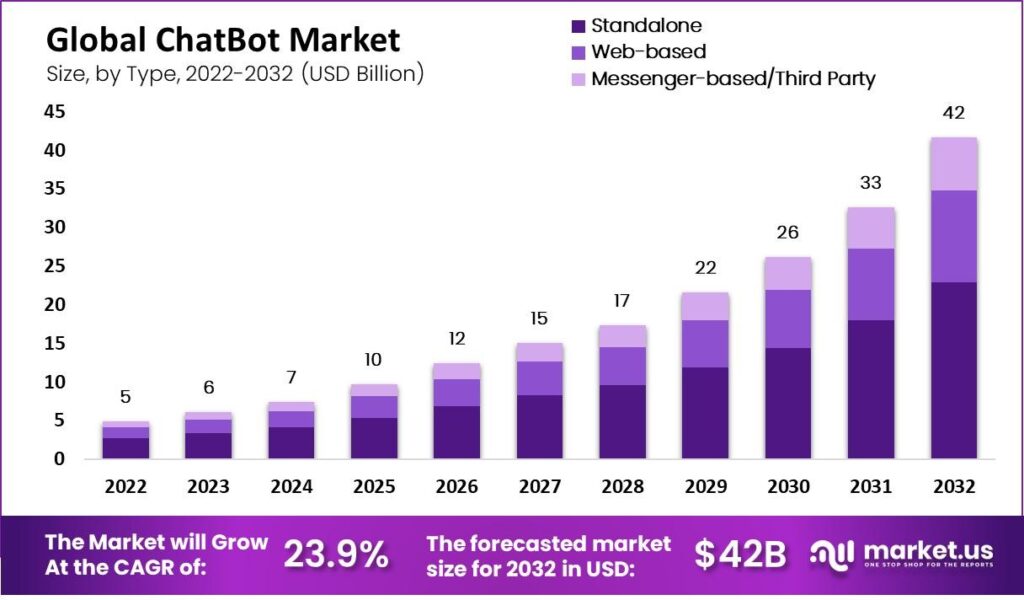
That’s why it’s not surprising that the chatbot market will continue to grow significantly over the years based on the forecast. Its versatility, various types, and continuous improvement are going to be enticing choices for businesses.
Take Domino’s Pizza, for instance. Its Facebook Messenger chatbot lets customers place their orders directly through chat, streamlining the ordering process. Through its chatbot, Dominos guarantees that its marketing efforts resonate with the modern consumer’s need for instant, efficient interactions.
Now let’s get into the different roles that chatbots play for your brand. Understanding how you can leverage them will help you develop chatbot strategies that fit your brand and business goals.
6 Ways To Leverage Chatbots For Your Marketing Efforts
As a forward-thinking business owner, these AI-powered chatbots can exceed your expectations and redefine what you thought possible.
Dive into these 7 chatbot applications and learn how to effectively harness these digital assistants.
1. Lead Generation
Chatbots are more than just digital customer support agents. They’re your powerful tools in the world of conversational marketing. They reshape interactions with customers and act as pivotal lead-generation machines.
Here’s how it works: A visitor lands on your website, and your marketing bot greets them immediately. With quick responses and engaging dialogues, the bot asks qualifying questions, discerning the visitor’s needs and interests.
But more importantly, your brand’s chatbot can capture contact details, making sure potential leads don’t slip through the cracks. This proactive approach funnels visitors into your sales funnel, transforming casual browsers into potential customers.
With this approach, you’ll build a robust pipeline to give you a steady stream of prospects ready to be guided for conversion.
STL Beds’ website chatbot is a great example of this. Their chatbot offers to record the user’s email address and name, making sure that if a human agent doesn’t engage within 2 minutes, their customer service team will reach out via email with the answers.

With this strategy, the brand hits two birds with one stone. It lets users know that their customer questions will not go unnoticed even if a human agent is not available at the time. Plus, they get to add the contact details to their pipeline of potential leads, driving their lead generation efforts forward.
2. Lead Qualification
Not all leads are built equal, and going after someone who will lead you nowhere will result in your brand losing important resources. However, identifying who among the sea of website visitors is a high-potential prospect worth pursuing is challenging.
How do you sift through the noise?
Chatbots act as your first line of engagement and qualification. They’ll interact with visitors, ask the right questions, and filter out leads based on relevant responses.
Program them to engage users with specific questions that align with your ideal customer profile. Based on the responses, they can categorize and prioritize leads, adding them to a targeted contact list for your sales team to follow up on.
For example, let’s say you’re in the B2B cybersecurity business. Have your chatbot ask visitors specific questions like:
- What sector does your company operate in?
- How many endpoints does your network have?
- Are you currently using any cybersecurity solutions?
- Have you experienced any security breaches in the past year?
Based on the responses, the chatbot can assess the urgency and relevance of the user’s cybersecurity needs. So, if a visitor indicates they’ve recently experienced a security breach, the chatbot can prioritize this lead, adding them to a ‘high-priority’ contact list for your sales team.
Why? Because that user has an immediate need to employ the best cybersecurity practices and solutions for their company.
What makes this genuinely transformative is how chatbots automate the entire process. What would typically require hours of manual work by customer support teams will now be handled efficiently by the chatbot.
Routine tasks like sorting through customer journeys to identify potential leads become automated, freeing up your team to focus on more complex tasks.
3. Feedback Collection
A successful marketing strategy requires you to understand your audience, and this is where chatbots excel.

Whether it’s a new product you’ve launched or the overall user experience on your website, chatbots can prompt current customers for their views and sentiments. Thus, helping you seamlessly collect customer feedback.
How do you make them do this?
Integrate chatbot services into multiple platforms like your website, app, or social media channels. Program them to ask pointed questions after they buy your product or use your services.
Here are questions you can ask:
- How did you hear about us?
- How likely are you to recommend our store to a friend?
- What can we do to improve your next shopping experience?
- Did you encounter any issues while shopping with us today?
- How satisfied are you with the checkout process on a scale of 1-5?
You can also set them to pop up during a customer’s browsing experience to gauge real-time reactions, and ask the following questions:
- Do you find our website easy to navigate?
- Are you finding everything you’re looking for?
- Would you like to speak to a customer service representative?
This direct line to customer expectations and preferences provides invaluable insights to continually refine your strategies.
4. Booking & Reservations
In service-based industries, where booking and reservations play a major role, chatbots are a game-changer. So, if your customer is looking to book a hotel room or schedule a product demo, you can have a chatbot pop up, offering instant response and a streamlined booking process.
Within minutes, your customer’s reservation is confirmed, making their experience quick and smooth. This immediate engagement can be the difference between a casual visitor and a committed customer.
For instance, let’s say you’re running an insurance company with limited staff members. A potential client lands on your website, curious but not yet committed. They called your office, but no one answered since everyone was meeting with other clients.
With that, your lead just slipped from you. Frustrating, isn’t it?
That scenario would have turned out way differently with a chatbot. On your website, a chatbot can pop up while a user is browsing, offering to schedule meetings with insurance advisors for personalized advice or quotes.
Continue offering that level of convenience to build customer loyalty. Clients appreciate booking meetings easily, making them more likely to return and even recommend your services.
Moreover, as a brand with limited manpower, a chatbot guarantees that every insurance agent you have prioritizes high-value interactions rather than administrative tasks. Thus, maximizing their time and focusing on closing deals.
5. Personalized Product Recommendations
Chatbots equipped with artificial intelligence are a marketer’s dream to develop personalized customer experiences.
How?
They analyze user behaviour and preferences to suggest products that the customer is likely to be interested in. This enriches the user experience and shortens the sales cycle, increasing the chances of a purchase.

In addition, chatbots let you gather invaluable data on customer preferences, helping you refine future marketing strategies.
So, if you’re steering the marketing for a brand with an extensive product line spanning hundreds of items like the lingerie brand 3Wishes, a chatbot becomes an invaluable tool.
For example, a customer lands on your website, perhaps feeling overwhelmed by the choices. Enter your custom bot, ready to offer relevant products to customers for a personalized experience.
Your chatbot can ask:
- What colours do you prefer?
- Do you have a price range in mind?
- What type of lingerie are you looking for?
- Do you want a lingerie set instead of individual pieces?
Based on the answers, it can suggest specific lingerie items, accessories, or special offers that match the customer’s preferences.
For a lingerie brand, where choices are personal, your chatbot further elevates the shopping experience. It doesn’t just simplify the selection process; it tailors it, making lingerie shopping enjoyable and exclusive.
Beyond sales, the insights gathered from these interactions are gold mines, revealing customer preferences and desires. This can guide you in developing your future lingerie collections and marketing campaigns, boosting the brand’s allure.
6. Upsell & Cross-Sell
Upselling and cross-selling are strategies to encourage customers to purchase a higher-end product or an additional item, respectively.
What is a chatbot’s role?
They’ll analyze user preferences and guide customers to relevant content that complements their initial choice. With this proactive approach to expose them to a wider product range, chatbots boost customer engagement and increase the average transaction value.
For instance, let’s say you’re managing an MMA streaming platform. When a customer signs up for a basic monthly subscription, your chatbot should pop up and ask this to upsell:
- Would you like to upgrade to our premium plan for exclusive behind-the-scenes content and discounted pay-per-views?
To cross-sell, program your chatbot to ask this:
- Interested in our exclusive fight-night commentary? Add it to your package now!
These aren’t just random queries, it’s a calculated strategy to improve the sales process and maximize revenue. It guarantees a more personalized, efficient, and profitable customer journey.
Additionally, when customers feel their needs are anticipated and met, it elevates customer satisfaction. Hence, your chatbot also optimizes the entire shopping experience.
7. Loyalty Programs & Promotions
Loyalty programs and promotions are designed to reward repeat customers and incentivize new ones, ultimately expanding your customer base. Chatbots automate the promotion and management of these programs.

Ask targeted questions like “Would you like to join our loyalty program to earn points for every purchase?” or “Interested in getting 20% off your next order?” to engage users. Plus, by giving them access to exclusive content and offers, you’ll make your customers feel valued.
With chatbots, you can turn a one-time interaction into an ongoing relationship, maximizing your profits and reducing your customer acquisition costs.
Now let’s dive into the best implementation practices to maximize your resources and achieve marketing efficiency.
4 Best Practices For Implementing Chatbots
Go from concept to execution seamlessly and have a chatbot that functions and thrives based on your business goals. How?
With these 4 best practices, you’ll unlock techniques to turn your chatbot from a mere tool into a strategic marketing asset that gives you a competitive edge.
A. Set Objectives
Before anything else, set clear marketing objectives to have a roadmap for your chatbot marketing strategy. Without objectives, you’re essentially driving blind, unsure of what success even looks like.
Identify what you want to achieve. Are you looking to reduce your team’s manual work? Boost product demo bookings? Improve customer engagement? Increase sales?
Once you have your answers, tailor your marketing chatbots to meet these specific objectives.
For example, if customer engagement is your aim, program your chatbot to offer personalized product recommendations. If it’s sales, set it up to upsell or cross-sell.
With detailed direction, you can build a chatbot that guarantees every interaction is a step to achieving your broader marketing goals.
B. Design Conversational Flows
Guarantee a smooth and intuitive chat experience by programming your chatbots with conversational flows.
How do you achieve this?
Identify common questions or issues your customers face. Then, map out how your chatbot should respond, guiding the conversation to a resolution or desired action. For more complex issues, design the flow to escalate the query to a human agent seamlessly.
Here’s an example of a do and don’t for conversational flows if you’re selling digital downloads or products:
Do:
Customer: “How does your platform work for selling my digital art?”
Chatbot: “It’s simple and user-friendly! You can upload your digital product and set your price, and we’ll help you promote it. Would you like a detailed walkthrough?”
Customer: “That sounds great! How do I start?”
Chatbot: “Fantastic! Let’s begin with the sign-up process. Once you’re in, I’ll guide you through each step. Ready to dive in?”
Don’t:
Customer: “How does your platform work for selling my digital art?”
Chatbot: “We sell digital products. Please refer to our FAQ for more details.”
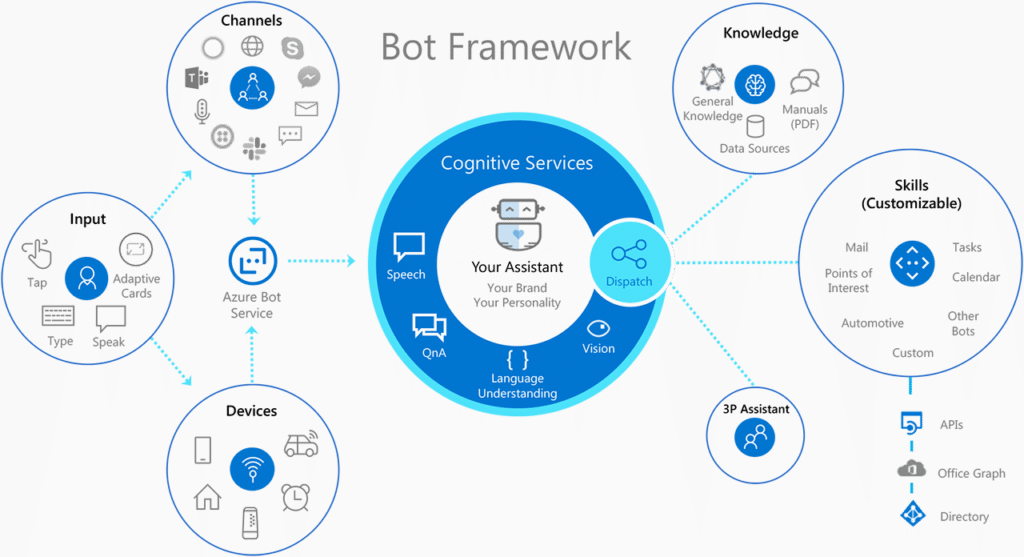
Dialogflow or Microsoft Bot Framework can help you create these flows with ease. With a well-designed flow, you’re effectively guiding the customer journey. Plus, it makes automated interactions feel personalized and effective.
C. Integrate With Other Marketing Tools
Marketing involves various components. Connecting your CRM systems, email marketing platforms, and analytics dashboards to your chatbot will let you develop a data-driven strategy. This makes your chatbot marketing efforts more targeted and effective.
Use platforms like Zapier to connect your chatbot to different apps and automate workflows. You can also use chatbot platforms that offer built-in integrations like Chatfuel, making the process even more seamless.
D. Train Your Chatbot Continuously
A well-trained chatbot can adapt to new customer behaviours, questions, or market trends. Think of your chatbot like an athlete; continuous training improves peak performance and it guarantees it remains an effective tool in your marketing arsenal.
You can train your chatbot by regularly updating its data sets and using machine learning algorithms to analyze customer interactions. IBM Watson or Wit.ai can assist in this ongoing training.
For example, if you notice that your chatbot struggles with handling queries about a new product, you can feed it more data related to that product and train it to respond more accurately.
However, it’s not just about making your chatbot smarter, teach it to give your customers a more personalized experience. Program it to offer a more tailored experience like suggesting a product to the right customer at the right time.
Just visualize having a chatbot smartly recommending your new product as a perfect holiday gift, and even sending a personalized holiday greeting to go along with it if they are returning customers.
Your chatbot can also do it the other way around. Program it to send a warm holiday message first and then have it seamlessly transition into recommendations for your seasonal products.
Wouldn’t that be amazing for users?
You can feed it relevant holiday messages that will go along with your seasonal products. A well-crafted greeting can uplift the customer’s mood, making them more receptive to what you have to offer. Strike the perfect balance between sentiment and sales to turn a simple greeting into an opportunity to showcase relevant products.
Conclusion
In today’s continuously automated world, chatbot marketing isn’t just an option but a necessity to boost your marketing efforts. When implemented correctly, chatbots redefine customer engagement, streamline your sales process, and provide invaluable data to refine your marketing strategies.
However, the work doesn’t stop once your chatbot is up and running. The most successful chatbot marketing strategies are those that evolve. So continue to evaluate your bot’s performance, train your chatbot to adapt to new customer behaviours, and tweak your strategies based on real-world data.
How do you keep up with chatbot trends?
Tecuy is your willing partner to provide you with the latest news in business, technology, AI, and marketing. But not just any news. The articles are free from rampant fake information. With various in-depth guides, you’ll stay ahead of the competition.
Sign up and subscribe today, so you won’t miss any updates.
What Do Media Buying Agencies Do?
In marketing, some teams excel in the media campaign process and some don’t. They meticulously define marketing objectives, establish tangible KPIs, and have a crystal-clear understanding of their target audience. Many brand teams find themselves in need of assistance while acquiring the most effective media space. The media buying phase of a campaign is a convoluted process, and at times, teams require additional support.
This is where media-buying agencies come into play. In this piece, we will explore the role of media-buying agencies. Shedding light on their functions and explaining why businesses should consider leveraging their services.
What is media buying?
Media buying is a broad term encompassing the procurement and acquisition of ad space across various media formats. A media buyer plays a pivotal role in the management of media plans and the purchase of specific ad space for ad placement.
Advertisers have several methods at their disposal for procuring ad space. Traditionally, it involved reaching out to ad publishers, striking deals, and running ads within specified timeframes and budgets. Alternatively, marketers can opt for programmatic platforms or ad exchanges. Where media buyers use demand-side platforms (DSPs) to access real-time ad space auctions facilitated by supply-side platforms (SSPs).
For a quick refresher on real-time bidding, DSPs, and SSPs, you can find more information here.
Media buying, however, is a complex process due to the vast array of available media channels. Without in-depth expertise in media buying and a thorough understanding of the target audience, it’s akin to throwing darts blindly into the abyss. Fortunately, media buying agencies exist to assist at this critical juncture of the advertising process.
Also Read – What is Website Tinting and How to Turn it Off?
The Role of a Media Planning Agency
Media buying agencies are external teams hired to manage media buying activities for businesses. These agencies align with the client’s strategic objectives, utilize creative media assets, and identify optimal ad space based on the established media strategy.
Services Provided by Media Buying Agencies
- Conducting in-depth audience research.
- Fine-tuning programmatic buying software.
- Negotiating agreements with ad publishers.
- Translating media plan objectives into actionable steps.
- Offering industry insights to guide campaigns and maximize ad spend.
Media buyers assist in placing media across various ad formats, including:
- Display ads.
- Digital Out of Home (DOOH) advertising.
- Programmatic Audio.
- Programmatic Video.
- Native ads.
- Social media advertising.
- Connected TV (CTV).
Media buying agencies focus exclusively on procuring ad space for their clients. Their responsibilities revolve around setting up ad deals. Either through traditional means or programmatically to participate in real-time ad space auctions. Once the ad space acquisition is complete, their role concludes.
Preceding the media buying phase is the role of a media planner. Media planners conduct in-depth research and compile the actual media plan. Upon completing this plan, it’s handed over to the media buyer, who then proceeds to purchase media as per the plan’s guidelines.
Benefits of Partnering with a Media Buying Agency
Collaborating with a media buying agency offers distinct advantages. These agencies specialize in the intricate aspects of media buying, allowing businesses to concentrate on creativity and overarching objectives. Programmatic advertising agencies handle the calibration and leverage their in-house resources to maximize campaign success.
Additionally, a media buying agency is a cost-effective option compared to engaging a full-fledged advertising agency. Clients retain control over campaign planning and strategy development. Utilizing the media buying agency’s expertise when ready to activate and purchase media space.
Also Read – What are Impressions on LinkedIn? How to Track
Media buying 101
The ideal media buying agency partner can vary based on client preferences and requirements. And here are the key attributes that make them desirable.
- Extensive experience in media buying spanning several years.
- High proficiency in media execution platforms, demand-side platforms (DSPs), and ad exchanges.
- A track record of success demonstrated through case studies.
- A comprehensive understanding of diverse media types.
- A data-driven approach.
- A willingness to engage in dialogue about campaign objectives and focus on key performance indicators (KPIs).
- An ability to take ownership of their work, communicate challenges and concerns, and admit mistakes when they occur.
- Proficiency in translating between marketing, technical, and layman’s language.
- Professionalism, coupled with a collaborative and approachable demeanor.
- Access to a team of experts who can assist with media buying.
- A steadfast commitment to achieving the client’s goals.
- A willingness to invest additional time to ensure flawless campaign activation.
Conclusion
Media buying agencies play a pivotal role in the advertising process. They focus on securing the optimal ad space for their clients. Allowing businesses to concentrate on their creative efforts and overarching goals. When seeking a media buying agency partner, clients should carefully consider their goals and assess potential partners based on specific criteria. By doing so, they increase their chances of achieving successful campaign results and a more fruitful partnership.
